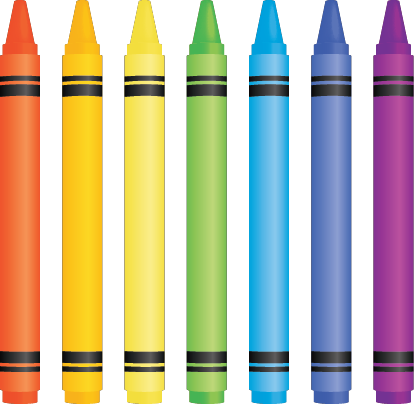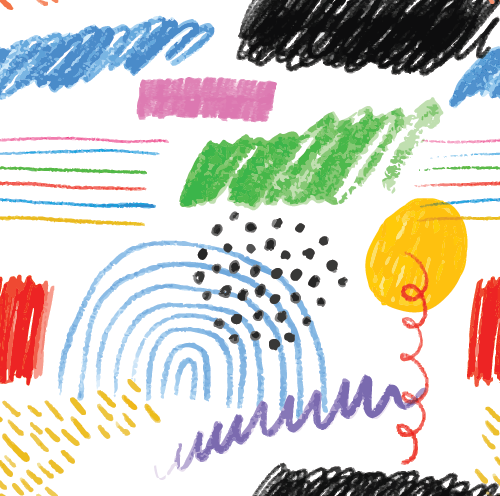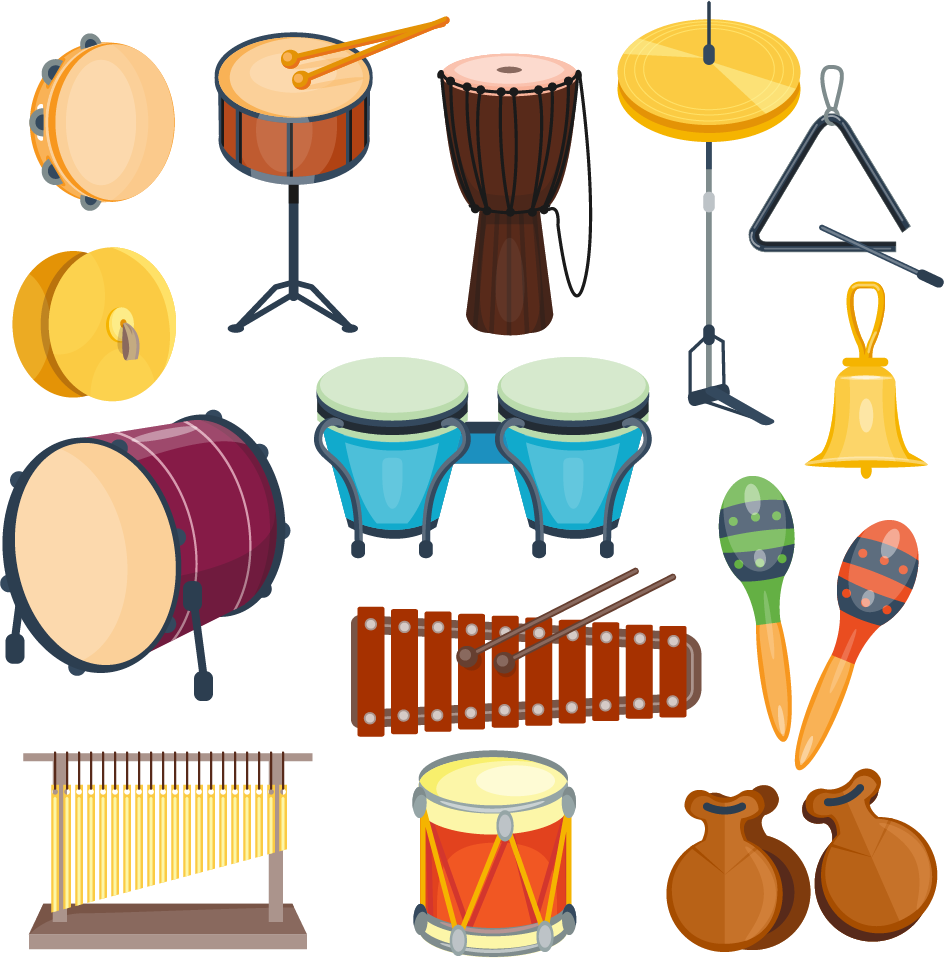
Level 1. Lesson 29. Timbre
![]()
![]() Woodblock
Woodblock
Difficulty: ![]()
Prior learning: None
Prepare: Present: Timbre Practice:
![]() Students will explore and understand timbre as the unique quality of sound that distinguishes one instrument or voice from another.
Students will explore and understand timbre as the unique quality of sound that distinguishes one instrument or voice from another.
 Questions
Questions
- If timbre is like a crayon’s colour, what would a xylophone sound like if it were a colour?
- What would it look and sound like if you could design an instrument with a new timbre?
- Do you think a wooden instrument could ever sound like a metal one?
- Begin by explaining the concept of timbre using the analogy of crayons. Each crayon has a unique colour, just like each instrument or voice has a special sound described as its timbre.
- Play the first four tracks one by one on the first audio player and ask students if they can recognise the instruments and whether the timbres are the same or different.
- Repeat the activity with the four tracks on the second player.
- Discuss the materials used to make instruments (e.g., wood, metal) and how they affect timbre.
- Encourage students to share their thoughts on how these materials influence the sound quality.
- Play a note on the xylophone, then the same note on the glockenspiel, and ask the class to describe how the timbres differ.
- Teach that timbre is the word that makes each instrument sound special, much like the unique colours in a box of crayons.
 Success Criteria
Success Criteria
- I can describe timbre as the colour of sound.
- I can identify if sounds from different instruments have the same or different timbre.
- I can describe how materials like wood and metal affect an instrument's timbre.

![]() Students will explore and understand vocal timbre by discovering how their voice can create different sounds and qualities.
Students will explore and understand vocal timbre by discovering how their voice can create different sounds and qualities.

 Questions
Questions
- What is your favourite timbre of voice?
- Why does your voice sound different from your teacher's?
- What would it look like if you could draw a deep and low timbre?
- Begin by explaining that everyone’s voice is like a special instrument. Like crayons with unique colours, each person’s voice has a special sound called timbre.
- Ask students to explore their voices with simple sounds:
- Use a soft "shh" like the wind.
- Use a loud “Ahh!” like a lion’s roar.
- Use a high "wee!" like a bird.
- Use a deep "oomph!" like a big drum.
- Play a guessing game where one student makes a sound (e.g., soft, loud, high, low) while the others guess what sound it is. Rotate so everyone has a turn.
- Discuss vocal differences by asking questions like, “Does a boy’s voice sound different from a girl’s?” and “What do you think a grandfather’s voice sounds like compared to yours?”
- Encourage students to mimic these voices (e.g., low and raspy for a grandfather, higher-pitched for a child).
- Sing a simple song together (e.g., on a neutral syllable like "la"). Then, ask students to sing it using different vocal timbres:
- Whisper it like a secret.
- Sing it loud and strong like a superhero.
- Sing it sweetly like a lullaby.
- Finish by discussing how their voices sounded different each time and how fun it is to explore vocal timbres. Celebrate their creativity and unique sounds!
 Success Criteria
Success Criteria
- I can describe vocal timbre as the unique sound of a voice.
- I can use my voice to create different timbres, such as soft, loud, high, or low.
- I can listen to and identify the different vocal timbres used by others.
![]()
Students will explore animal sounds to understand timbre by listening to a playlist of animal calls and distinguishing their unique qualities.
 Questions
Questions
- If you could be any animal from the playlist, which one would you choose and why?
- What other animals do you think have really unique sounds, and how would you describe their timbre?
- If all the animals in the playlist made a band, which would be the singer, and which would play the drums?
- Introduce the idea that animals, like instruments, have unique sounds or "timbres" that help us distinguish them.
- Play the animal sound playlist containing the sounds of a frog, donkey, kookaburra, birdsong, and dog.
- After each sound, ask what animal you think that was.
- What did you hear that made you think it was that animal?
- Encourage descriptions like "the frog's sound was low and croaky," "the donkey was loud and braying," or "the kookaburra sounded like laughter."
- Conclude by discussing how listening carefully to unique qualities of sounds helps us identify timbre in both animals and music.
 Success Criteria
Success Criteria
- I can identify the sounds of different animals from the playlist.
I can describe what makes each animal's sound unique.
I can explain how I recognised each animal by its timbre.
![]() Students will develop their listening skills and musical understanding by identifying percussion instruments through their unique timbres.
Students will develop their listening skills and musical understanding by identifying percussion instruments through their unique timbres.

 Questions
Questions
- If you could add a magical instrument to the Percussion Palace, what sound would it make?
- Which percussion instrument do you think would make the best sound for a royal parade in the palace?
- If the instruments in the palace could talk, which one do you think would have the funniest voice?
- Explain to the class that they are entering an imaginary Percussion Palace filled with magical instruments.
- Introduce each instrument (e.g., claves, glockenspiels, xylophones, woodblocks, and drums) by name and play its sound, emphasising its unique qualities.
- Have students close their eyes as you play one of the instruments.
- Once they open their eyes, they will determine which instrument you played. Ask them to share what clues, such as pitch, material, or timbre, helped them identify it.
- Repeat several rounds, mixing up the order and adding variety. Divide the class into teams or let students take turns as the players.
 Success Criteria
Success Criteria
- I can listen carefully to the sounds of percussion instruments.
- I can identify the instrument played based on its timbre.
- I can describe what makes each instrument’s sound unique.
![]()
Students will develop coordination and rhythm skills by performing movements and actions that correspond to the song A Ram Sam Sam.
![]() Lyrics
Lyrics
A ram sam sam, a ram, sam, sam,
Guli, guli, guli, guli ram sam sam.
Arafi, arafi, guli, guli, guli, guli ram sam sam.
- Teach students the melody and words of the song slowly to ensure everyone is familiar.
- Repeat a few times for practice.
- Demonstrate the movements:
- For “A ram sam sam,” clap hands together twice.
- For “Guli guli guli guli guli ram sam sam,” make a rolling motion with both hands.
- For “A rafi, a rafi,” pat knees twice.
- Repeat the rolling motion for “Guli guli guli guli guli ram sam sam.”
- Students sit or stand in a circle or perform individually.
- Begin singing slowly while performing the movements.
- Gradually increase the speed with each repetition to add a fun challenge.
- Change actions (e.g., clap above the head, stomp feet, snap fingers) and invent new movements to keep the activity dynamic and exciting.
 Success Criteria
Success Criteria
- I can perform the correct actions for each part of the song in time with the music.
- I can increase my speed while keeping up with the group.
- I can explore and try new movements for the song’s variations.
 Questions
Questions
- Which country did this song come from? [Morrocco]
- Where is Morrocco? [Africa]
- Can you understand the words?
![]() Students will compose, notate, and perform 8-beat rhythms using ta and ti-ti.
Students will compose, notate, and perform 8-beat rhythms using ta and ti-ti.
- .Review the rhythm syllables ta and ti-ti by clapping simple examples and having students echo them.
- Provide students with their music books {e.g. MFMWB p27] or the worksheet provided and explain they will compose an 8-beat rhythm using these syllables.
- Once students complete their compositions, have them practice clapping their rhythms silently.
- Select a few students to share their rhythms by clapping them for the class.
- Encourage the rest of the class to listen and count along to check for accuracy.
- Optionally, write some rhythms on the board and have the class clap them together.
- After the activity, discuss what made the rhythms interesting and how they could improve their composition skills.
 Questions
Questions
- How many times did you use ta in your composition?
- Did you enjoy your composition?
- Did any composition from your classmates sound the same as yours?
 Success Criteria
Success Criteria
- I can compose an 8-beat rhythm using ta and ti-ti.
- I can accurately clap the rhythm I composed.
- I can listen to and count the rhythms of my classmates.
![]() ASSESSMENT QUESTIONS
ASSESSMENT QUESTIONS
- The student can distinguish between different timbres.
- The student can distinguish between percussion instruments.
- The student can write an 8-beat rhythmic pattern using ta and ti-ti.

Suggested lessons
Y1. Beat II

Y1. Beat III

Y1. Beat IV

